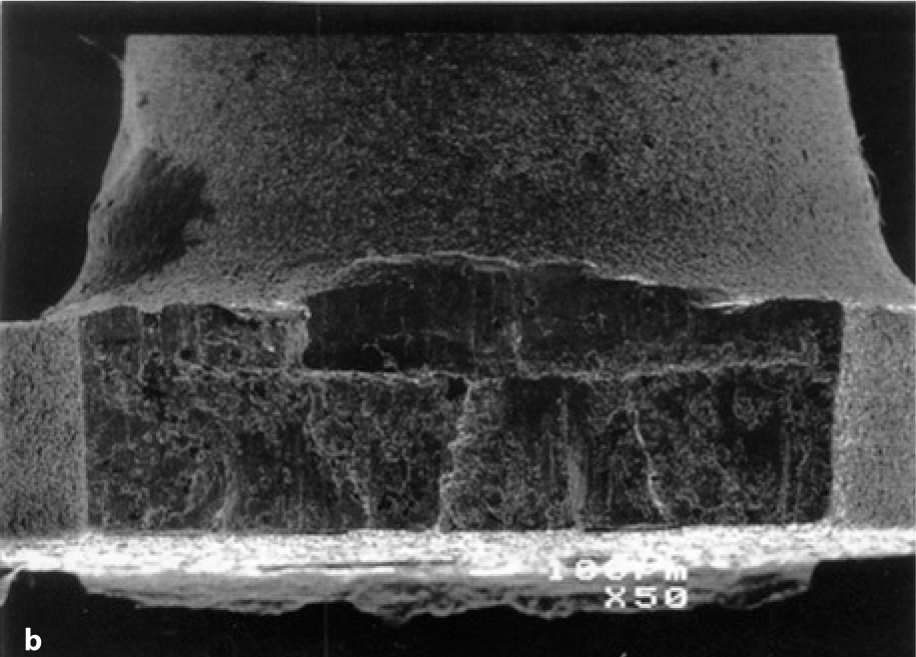
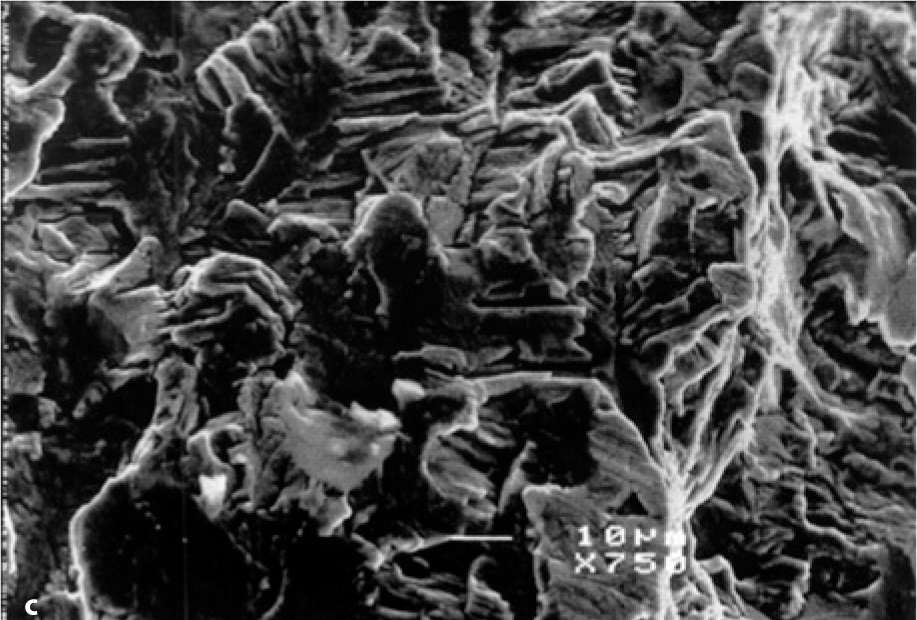
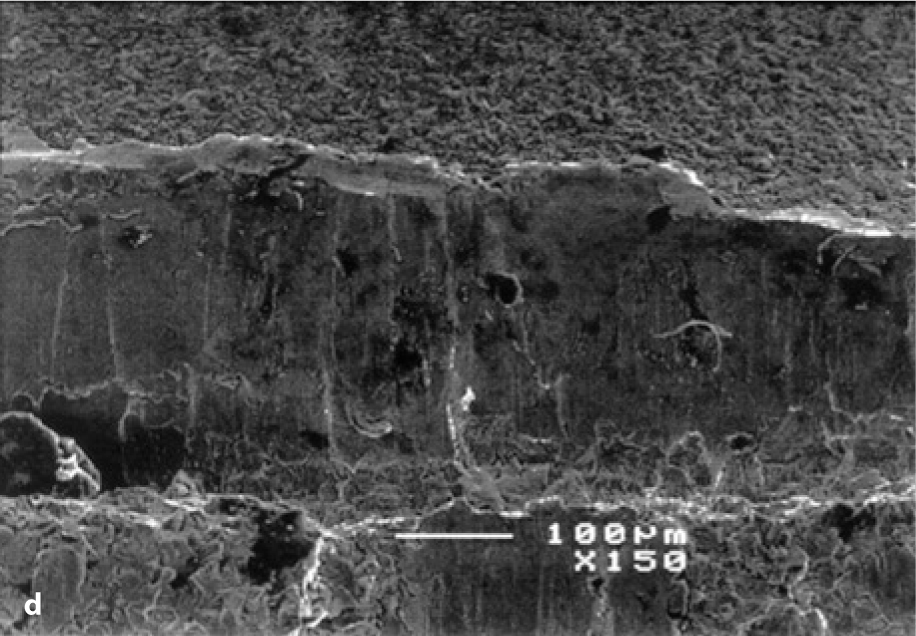
Fig. 21.1a–d.
This fractured implant reveals a distinct shoulder even under the light microscope. A more distinct representation is obtained by scanning electron microscopy. While the upper segment of the shoulder has been blurred somewhat by abrasion, the original fracture surface is clearly visible in the lower segment
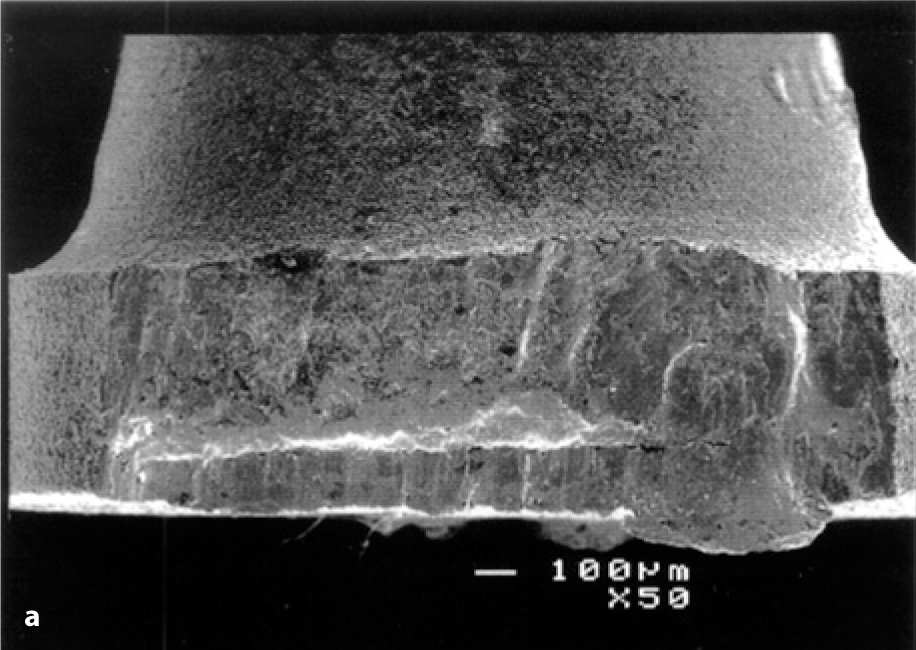
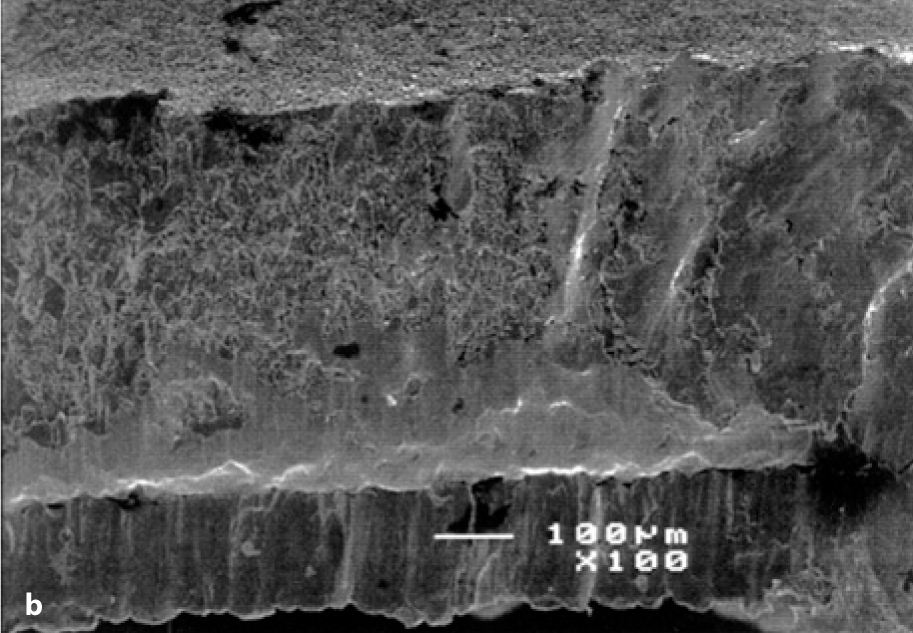
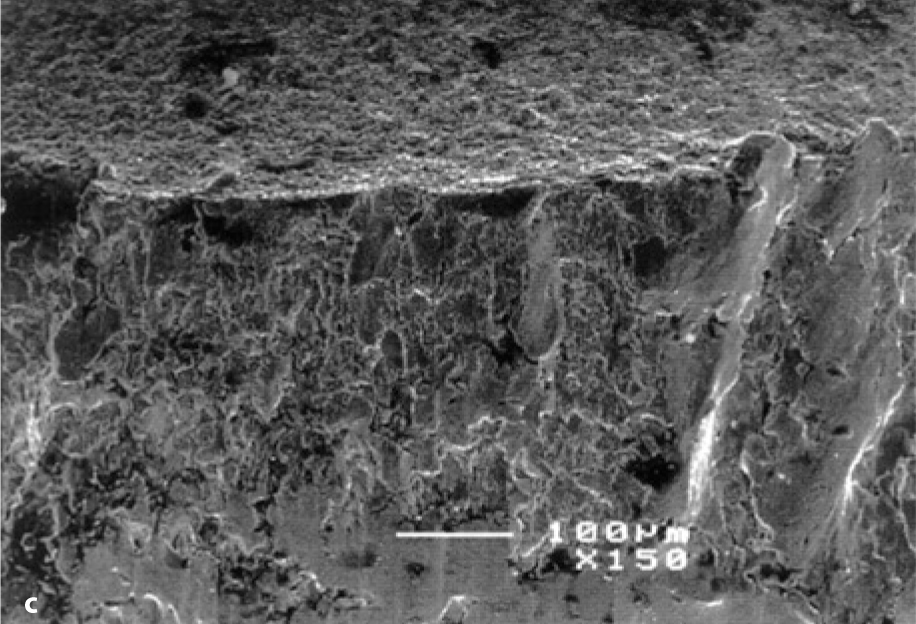
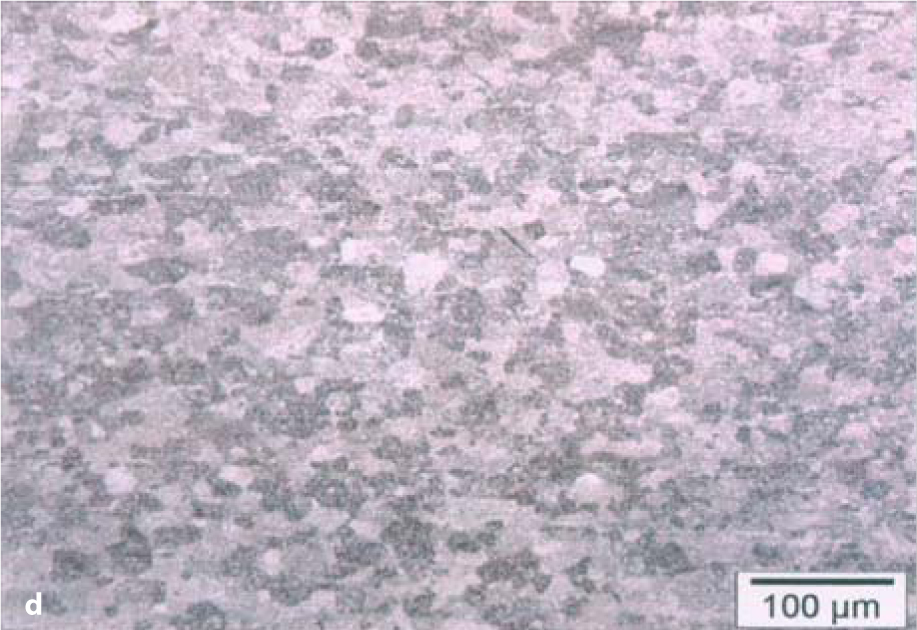
Fig.21.2a–d.
This implant also reveals typical signs of fatigue fracture. Only the very last fragment breaks by force in this type of fracture. The fatigue zone is located in the upper implant segment rather than in the lower segment (i.e. unlike in Fig. 21.1). Overload-related failure of BOI implants can thus occur in response to either extrusive or intrusive forces. This finding has important implications for the clinical work with BOI implants. Due to the manner in which loads are distributed by the bridge, some implants are subjected to greater extrusive than intrusive forces. Distal BOI implants in the maxilla are sometimes subjected to considerable extrusive forces in the presence of anterior chewing patterns, which are not sufficiently balanced by intrusive forces. The load is generated by oblique surface contacts on the anterior teeth, while the canine implants are the fulcrum of the lever forces resulting in extrusion
21.3 FEM Analysis of Different Loading Situations
A study of fractured implants suggests that resilient behaviour in the spongious bone compartment must be present in vivo because inflexible anchorage of the implant base would otherwise cause any fractures to occur on the crestal side of the implant or, in the presence of advanced vertical bone resorption, along the lower portion of the threaded pin.
21.3.1 Conclusion
Our analysis of fractured implants suggests that resilient behaviour in the spongious bone compartment must be present in vivo because inflexible anchorage of the implant base would otherwise cause any fractures to occur on the crestal side of the bone or, in the presence of advanced vertical bone resorption, around halfway up the threaded pin. If we ever would have the choice between an overload osteolysis and a fracture we would decide for a fracture since this problem is very easy to treat.
Stay updated, free dental videos. Join our Telegram channel

VIDEdental - Online dental courses


